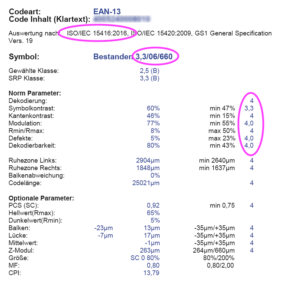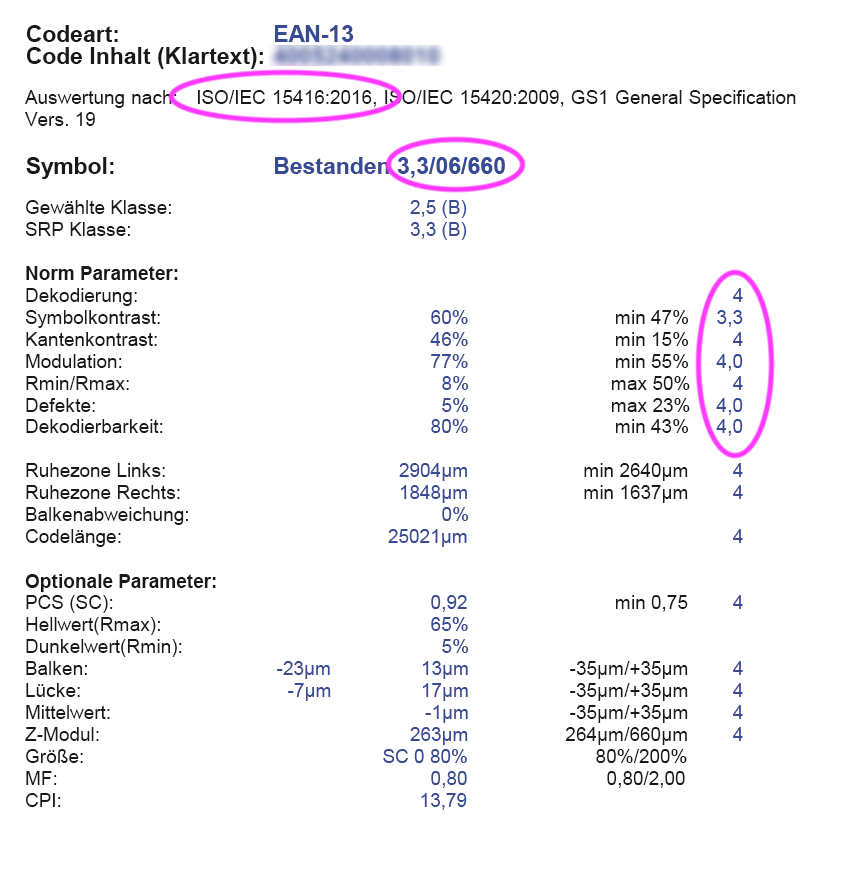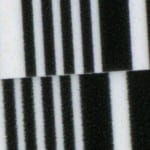The “ISO/IEC 15416:2016 – Information technology – Automatic identification and data capture methods – Test specifications for bar code print quality – Linear symbols” specifies the current criteria for testing bar codes. ISO 15416:2016 replaces ISO 15416:2000 and defines modified bar code quality calculations for some areas. During the barcode check by Proof GmbH, barcodes are checked according to the current criteria of ISO 15416:2016.
An overview of the most important changes in ISO 15416:2016:
 Four of the seven barcode parameters – symbol contrast, modulation, defects and decodability – were previously graded by whole numbers, so the evaluation could be 0, 1, 2, 3 or 4. With the adoption of the ISO/IEC 15416:2016 standard, evaluations are now graded to one decimal place. So under the old standard there were only five possible parameter gradations (0/1/2/3/4), now there are forty-one (0.0/0.1/0.2 etc. to 4.0).
Four of the seven barcode parameters – symbol contrast, modulation, defects and decodability – were previously graded by whole numbers, so the evaluation could be 0, 1, 2, 3 or 4. With the adoption of the ISO/IEC 15416:2016 standard, evaluations are now graded to one decimal place. So under the old standard there were only five possible parameter gradations (0/1/2/3/4), now there are forty-one (0.0/0.1/0.2 etc. to 4.0).- This also changes the rating with letters. Since this is even less precise than the evaluation by numbers, it is omitted in the new standard, whereby the usual letter notes can still be provided for information purposes. However, the nominative standard must be given as a decimal number.
- Defects are now calculated methodically differently. A defect is a light spot on a dark bar or a dark spot on a light surface. If a defect was at the edge of a bar or a gap, the old standard gave a worse rating than the same defect that was further from the edge. The calculations in the new ISO/IEC 15416:2016 standard describe the effects on the readability of the barcode much more accurately.
The new calculation methods lead in some cases to a higher averaged score for the barcode compared to the method described in ISO 15416:2000.
We have also updated our REA TransWin 32 evaluation software to the latest version and also provided our barcode checking device with a firmware update.
Order Barcode Checks for EAN13 and EAN8 Codes in our Proof Shop



